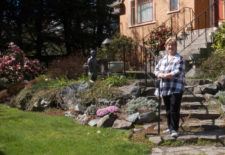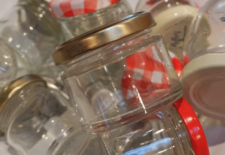Photographing the Canada C3 Expedition
by Michele Murphy
On October 28, 2017 the Canada C3 Expedition made a grand entrance into Victoria’s Inner Harbour greeted by an adoring public,and a gala celebration. This was the final stop on its 150-day journey from Toronto through the Northwest Passage.
The C3 Expedition was an epic coast-to-coast-to-coast all-Canadian journey on a retired Canadian Coast Guard icebreaker .The journey commemorated Canada’s 150th Anniversary of Confederation. The theme – honouring the past and looking towards the future, exploring the four key themes of Canada 150: Diversity and Inclusion, Reconciliation, Youth Engagement and the Environment.
The ship set sail June 1 with a crew of 15 and an expedition staff of 23 – and another 25 berths to accommodate a revolving cast of almost 400 volunteers that were lucky enough to be chosen from the 5,000 that applied.
Those 400 would be comprised of scientists, artists, Indigenous Elders, historians, community leaders, journalists, educators, and youth – including twenty-year-old Victoria inventor Ann Makosinski. The 23,000 kilometre trip was divided into 15 seven- to 12-day legs over five months. Most of the volunteer crew were limited to one or two legs of the trip. Among the crew of the C3 was Saanich resident and photographer Michelle Munkittrick. SVO caught up with Ms. Munkittrick on this Canada Day season and asked her of her experience on this once-in-a-lifetime journey.
SVO: What inspired you to apply to be a part of the Canada C3 Expedition?
“The application was a result of a combination of events. A burgeoning travel and adventure photographer, I was perusing Facebook and noticed an advertisement – an image of the bow of a ship breaking ice, with a caption that called on me to ‘Apply Now.’ I thought that this could possibly be the big break I was looking for,” Munkittrick explained.
Munkittrick applied as an artist / photographer / videographer.
Munkittrick recently completed a volunteer-based media project for the Surfrider Foundation as well as several other visual media productions with local indigenous and non-indigenous artists.
“The application process was extensive and grueling to say the least. It entailed producing a three-minute video that demonstrated my personality and my enthusiasm for the project (www.www.saanichvoiceonline.ca
for a link to this video); a 15-piece portfolio with explanation; a biographical career history; and an extensive questionnaire,” recalls Munkittrick.
It would be several months before Munkittrick would receive a response. Sadly her application was denied.
But she wasn’t deterred.
“In most cases I would have just convinced myself that it wasn’t meant to be, but not this time. I had to go,”
She explains, ‘You see, five years previous my beloved husband and photography mentor, Douwe Verboom died suddenly of a brain aneurysm. Months preceding his passing, not knowing his fate – when asked the question “If you were to die where would you want your ashes spread?,” he answered with a smile “the Arctic.”
“I had never heard him speak of the Arctic until that day, but giggled in response… after all Douwe was anything but ordinary, he was highly creative thus his answer not surprising. On the day of his celebration of life – understanding the extent of that kind of trip – I made a pact that I would give myself five years to make it happen.”
Serendipitously, the C-3 Expedition would be sailing up the coast of Baffin Island and crossing the Arctic Circle on leg seven and eight – which fell on the fifth anniversary of Douwe’s passing. “Call it meant-to-be, obviously I had to figure out a way to participate on the expedition.”
Munkittrick managed to find the contact information for Peter Wall, the head of the C-3 communications team. She took a chance and called him asking that he take a look at her website and on-line portfolio. She then “very enthusiastically” proposed he consider putting her on leg seven and eight of the expedition. Wall took a look, loved her work and hired her on as one of the two photographers on a team of six visual and social media professionals – on leg seven and eight. This was a now a career -dream come true for Munkittrick – a paid position where her work would be seen on social media and in galleries across Canada.
SVO: How did the experience of it differ from your expectations and why?
“I’m not sure that I had any expectations about the experience – it was more excitement and curiosity around how it would all come together and the breadth of the work that the communications team had to produce,” says Munkittrick. “I had no idea what kind of experience this would be, after all who could imagine what it would be like to be on an
icebreaker in the Arctic!”
SVO: What was your largest challenge? Your biggest thrill? The most lasting single memory.
Munkittrick says that the biggest challenge was definitely the schedule. She explained that, “Each day consisted of 14 hours of shooting with two camera bodies and four lenses in tow… and then the sifting and editing of the day’s 2,000 images would begin and usually last until one or two in the morning.” She said that the work was compromising and physically exhausting at times. “Documenting the Expedition while out in the cold on zodiacs proved difficult as did running up and down the stairs and hallways while experiencing rough seas. Shooting portraits, food, wildlife, always making sure you were ahead of the groups when on land hiking, capturing candid shots of meaningful moments that embodied the essence of the beauty that was everywhere you looked required being ‘on’ at all times. Regardless, I loved every minute of it. It was overwhelming yet awesome in the truest sense of the word.”
Munkittrick says that her biggest thrill was waking up at 5 am to the sound of breaking ice, and then, running outside only to see what’s called a tabular berg. “It was the size of three New York City blocks. The next-biggest thrill was my first sighting of a female polar bear and her cub. I took 600 images and managed to get ‘the shot’ that was archived and shared. I still well-up when I think about that particular moment. It’s a rare sighting as the snow-white bears tend to blend into the vast landscape and are becoming more and more rare in
population,” she explains.
Her most lasting single memory? “Spreading Douwe’s ashes. At the head of Sam Ford Fjord, surrounded by towering, monolithic rock and glaciers, crystal turquoise water I traversed the mossy, thick tundra covered in wildflowers up the glacial river to find a perfect spot to say goodbye. I’m not exaggerating when I say, it was the most beautiful place I’d ever been in all my travels and my proudest achievement to date.”
SVO: Has the Expedition changed you and if so how?
Munkittrick says that the experience has changed her in many ways. She says, “It was not only cathartic and professionally game-changing, but the lasting memories of the connections I made with the participants on board and the local Inuit people while visiting their communities such as Clyde River, QIKIQTARJUAQ, and Pond Inlet were heart altering.
“I learned valuable lessons about climate change, the fragility of our Canadian indigenous communities, oceans and marine life. But probably most impactful were the conversations that were had around truth and reconciliation. How it has informed my work today is paramount.
“The C-3 experience has opened several doors in my career bridging my passion for photography, teaching, story-telling, and cultural preservation,” says Munkittrick. She is currently working with several local indigenous communities on projects that include website development, a youth photography mentorship program, and a book project in the fall celebrating local indigenous storytellers and transformation sites.
You’ll find more of Munkittrick’s photos from the C-3 on her website Brave Art Media at on her C3 Arctic Expedition Leg 8 page.
For more on the expedition see Jody Paterson’s article in the TC


